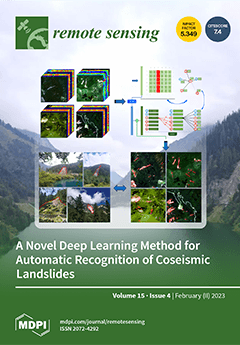Evapotranspiration (
ET) affects the dry and wet conditions of a region, particularly in arid Central Asia, where changes in evapotranspiration profoundly influence society, the economy, and ecosystems. However, the changing trends in and driving factors of evapotranspiration in Central Asia remain
[...] Read more.
Evapotranspiration (
ET) affects the dry and wet conditions of a region, particularly in arid Central Asia, where changes in evapotranspiration profoundly influence society, the economy, and ecosystems. However, the changing trends in and driving factors of evapotranspiration in Central Asia remain unclear. Therefore, we used estimated
ET and reanalysis data to answer research questions. Our results showed that (1) potential evapotranspiration (
PET) and
ET showed a generally downward trend, in which
PET and
ET decreased in 37.93% and 17.42% of the total area, respectively. However,
PET and
ET showed opposite trends in 59.41% of the study area, mainly showing a decrease in
PET and an increase in
ET. (2) The absolute contribution rates of vegetation–human activity coupling factor (
VH),
PET, and precipitation (
P) to
ET were 43.19%, 40.02%, and 16.79%, respectively, and the
VH was the main determiner of
ET. (3) Transpiration (
ETc) dominated the change in
ET in 56.4% of the region, whereas soil evaporation (
ETs) dominated the change in
ET in the rest of the region. The coverage threshold that determines the dominant contributions of
ETc and
ETs to
ET was approximately 18–19%. Below this coverage threshold, the contribution rate of
ETs to
ET exceeded that of
ETc and vice versa. In the context of global climate change, this study can provide scientific support for the restoration of water resources and sustainability evaluation of water resources.
Full article





